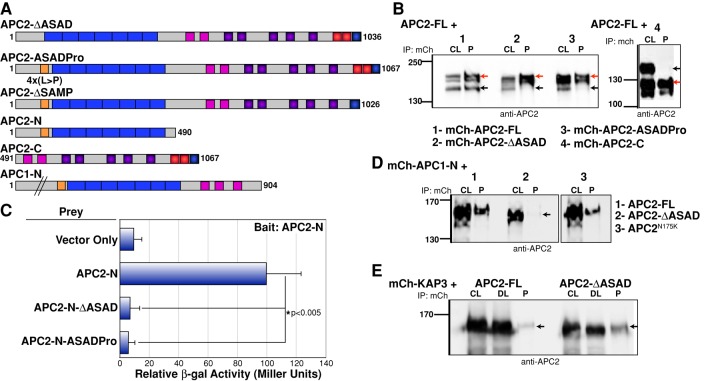FIGURE 2:
Removal of ASAD disrupts APC self-association. (A) Schematic representation of Drosophila APC2 and APC1 constructs used in the study. (B) mCherry (mCh)-tagged full-length APC2 protein (red arrow) coimmunoprecipitates untagged full-length protein (black arrow). mCh-APC2 ASAD mutants (both deletion and point mutant) and mCh-APC2-C (red arrows) fail to coimmunoprecipitate untagged APC2-FL (black arrows in 2–4). (C) Yeast two-hybrid experiments demonstrated that APC2-N can interact directly with APC2-N. Deletion of the ASAD (APC2-N-ΔASAD) or disruption of the potential coiled coil (APC2-N-ASADPro) abolishes this interaction. (D) mCh-APC1-N coimmunoprecipitates untagged APC2-FL protein but fails to coimmunoprecipitate the APC2-ΔASAD mutant (black arrow). APC2-N175K contains a mutation in the Arm repeats and retains the mCh-APC1-N interaction. (E) mCh-KAP3 coimmunoprecipitates both full-length APC2 and the APC2-ΔASAD mutant (black arrows). CL, cell lysate; DL, depleted lysate; P, pull down.

